How to Speed Up an Old iPad
Many iPad users find that over time, their devices don’t run as smoothly as they once did. This can be frustrating, especially when delays and lags interfere with your daily tasks. So if you’re looking to speed up an old iPad, you’re not alone. Fortunately, there are several steps you can take to improve your iPad’s performance. From freeing up storage space to updating your system software, in this article, we will walk you through various methods to get your iPad running again.
Restart Your iPad
Regularly restarting your iPad can significantly speed up an old iPad by clearing its memory, which helps manage resources better and closes apps that might be running in the background without your knowledge. Here’s a simple way to restart your iPad:
- Press and hold the top or side button of your iPad with the one of volume buttons until the power off slider appears on the screen.
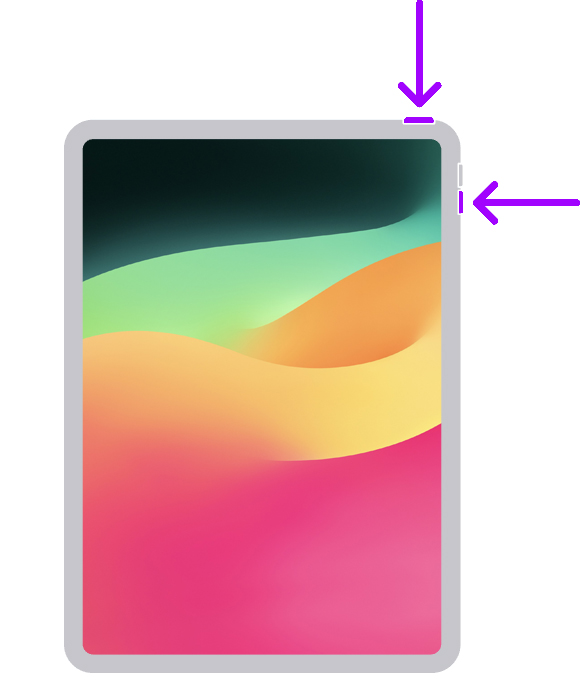
- Swipe the slider to turn off your iPad. Wait a moment for the device to shut down completely.
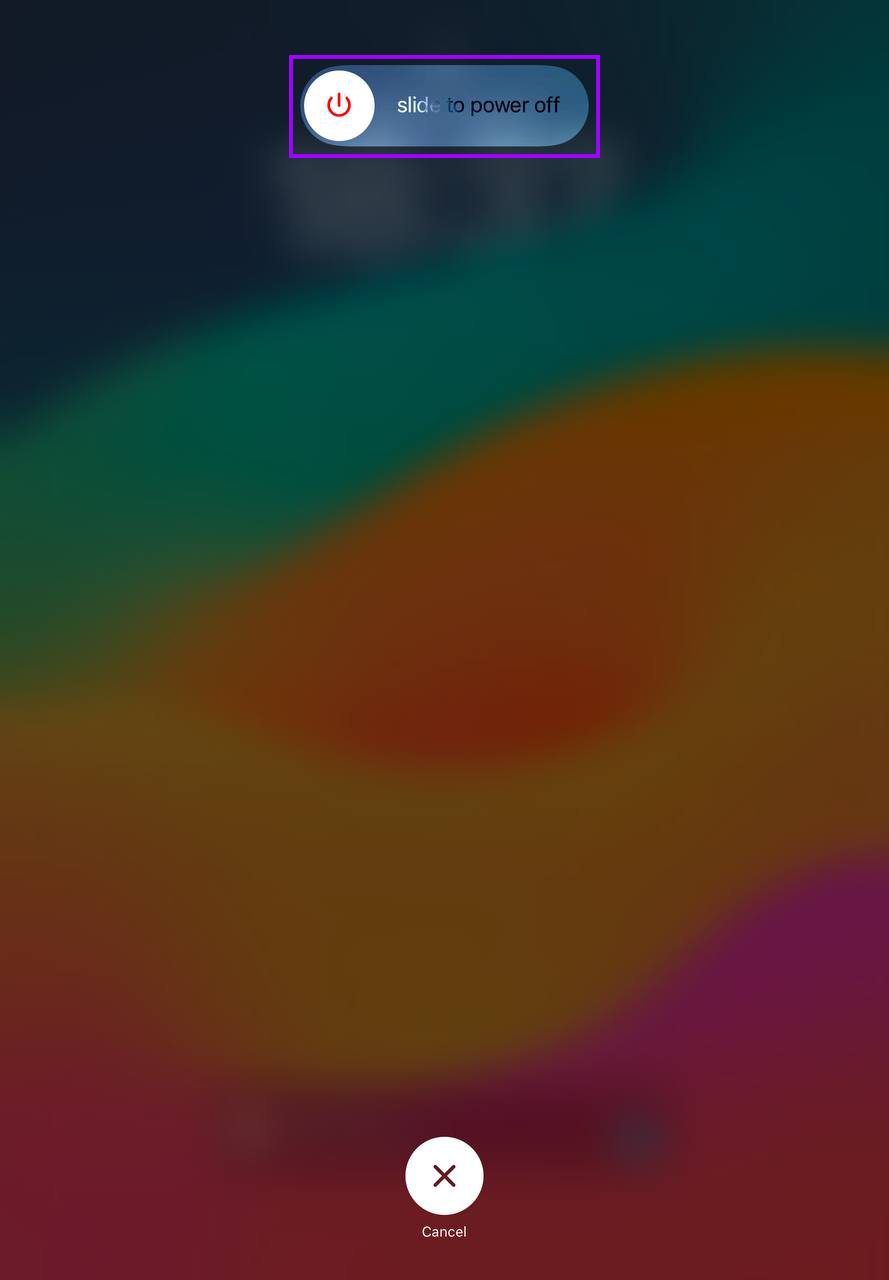
- Press and hold the top or side button again until you see the Apple logo, indicating that your iPad is rebooting.
This process refreshes your iPad’s operating system and is especially useful for resolving minor glitches and freeing up system memory. Regular restarts, such as doing it once every month, can make an old iPad run faster and more reliably.
Update to the Latest iPadOS
Keeping your iPad updated with the latest version of iPadOS can improve iPad performance by introducing new features, enhancing security, and fixing bugs that might be slowing down your device. Here’s how you can update your iPad to ensure it runs efficiently:
- Make sure your iPad is connected to a stable Wi-Fi network to download the update.
- Be sure to back up your iPad to iCloud or your computer before installing an update to avoid losing your personal data.
- Go to the Settings app, tap on General, then Software Update.
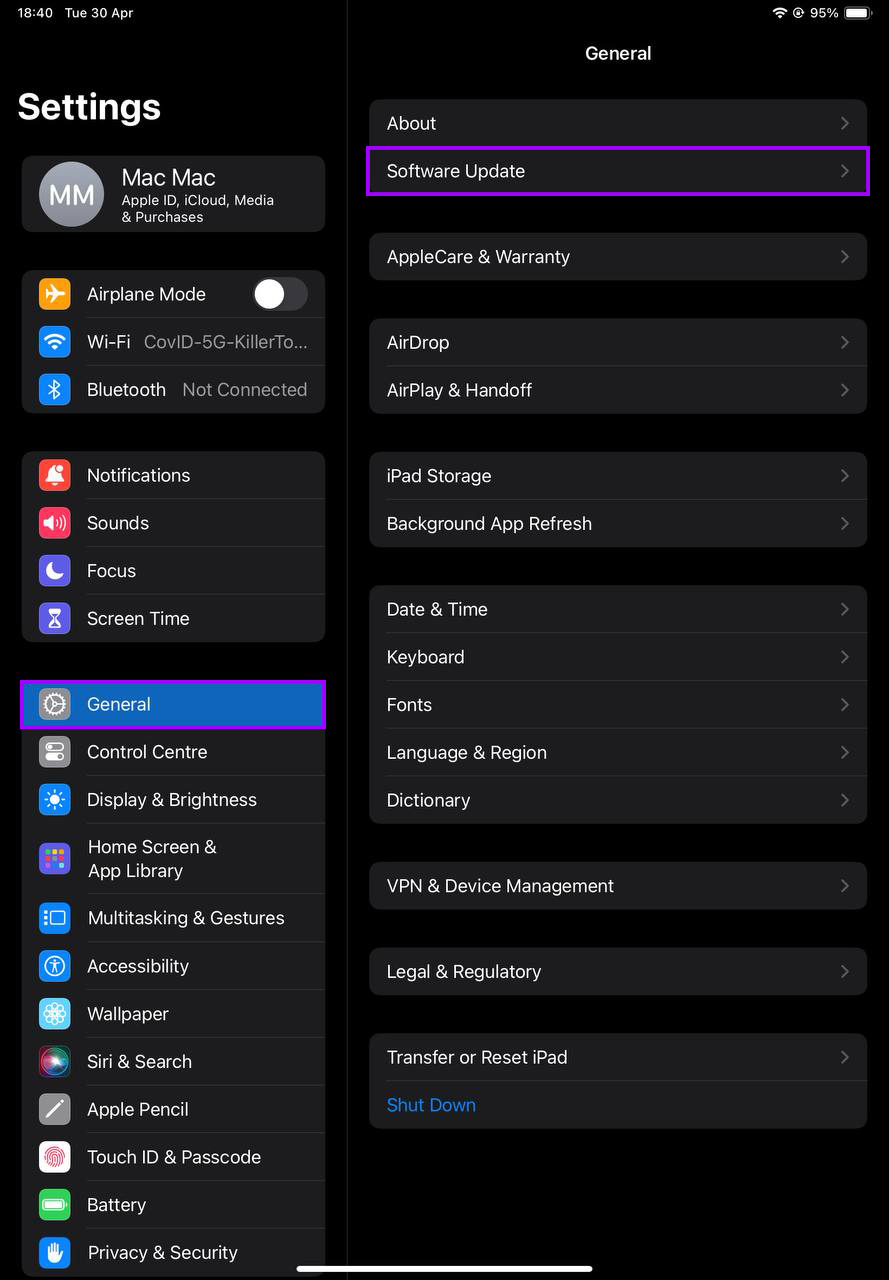 If an update is available, tap on Update Now. Follow the on-screen instructions to complete the update.
If an update is available, tap on Update Now. Follow the on-screen instructions to complete the update.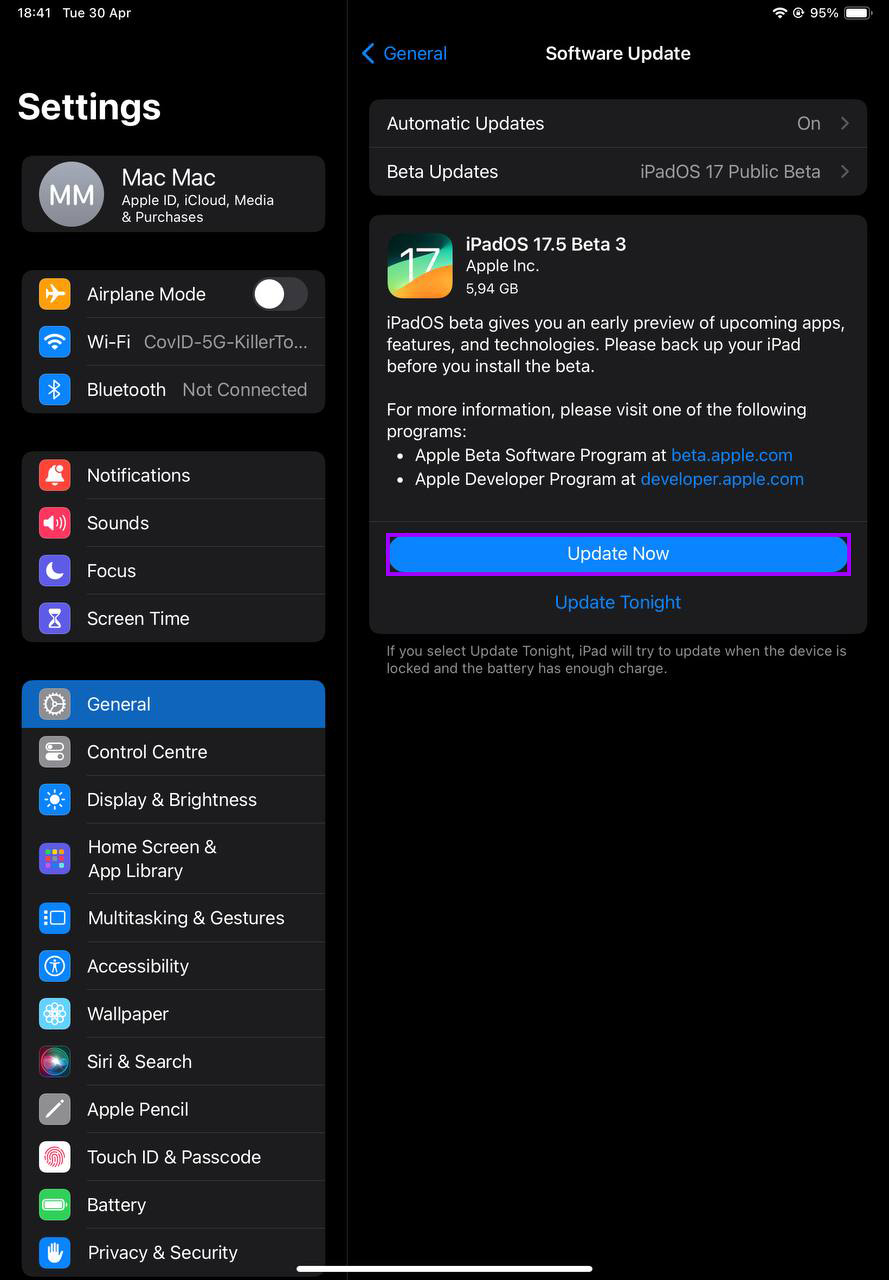
Updating your iPad fixes known issues and may improve your device’s performance by taking advantage of the latest software adjustments.
Free Up Storage Space
If your iPad is running slowly, one of the most effective fixes is to clean up iPad to run faster by freeing up its storage space. When your iPad’s storage is nearly full, it can hinder performance, causing apps to open slowly and file transfers to lag. Here’s how you can manage your storage:
- Open the Settings app, tap on General, then select iPad Storage. This screen will show you a breakdown of what types of files are taking up space.
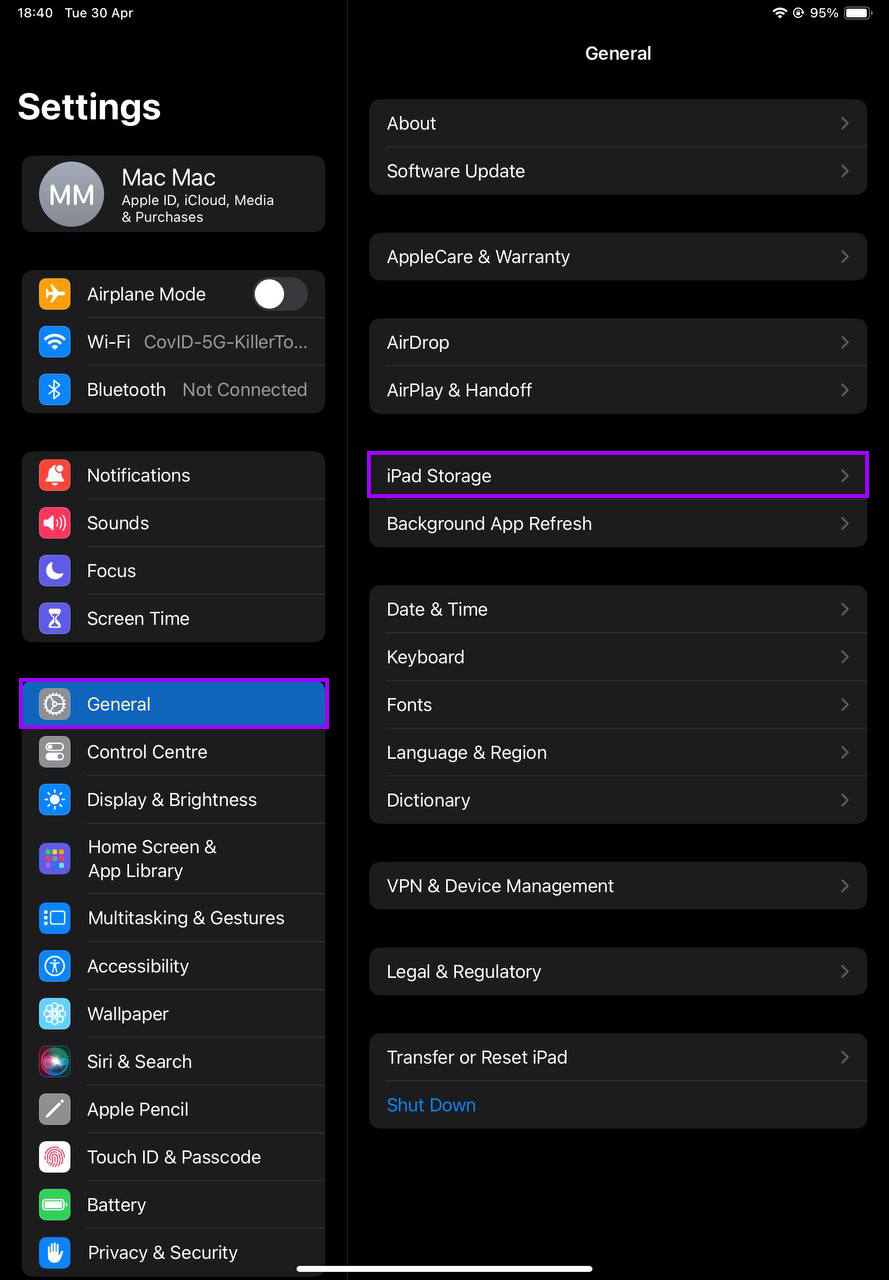
- From the iPad Storage screen, you can see which apps use the most space. Tap on an app that you no longer need, and select Delete App to remove it along with all its data.
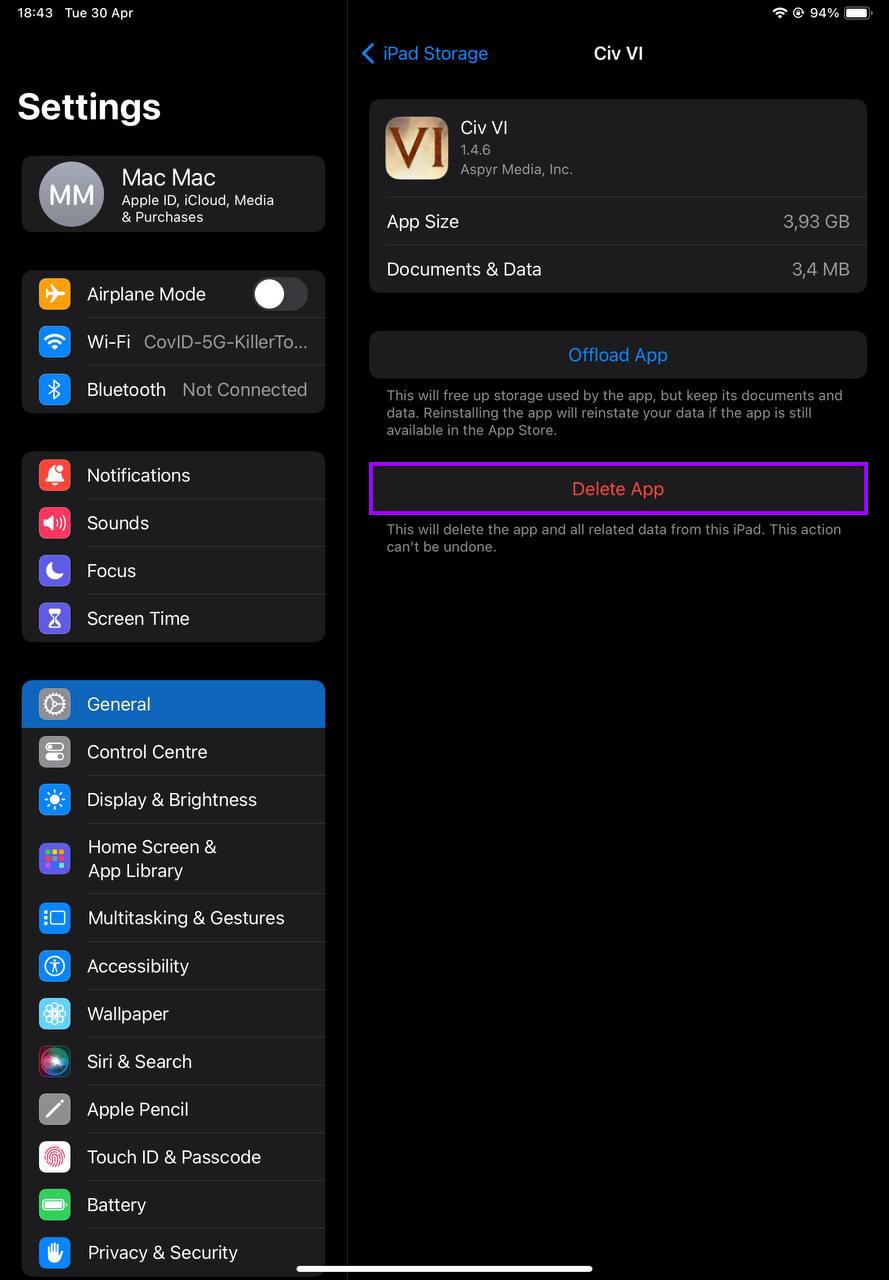
- For apps you rarely use but aren’t ready to delete, use the Offload App feature. This removes the app but keeps its documents and data. You can reinstall the app without losing your data if needed later.
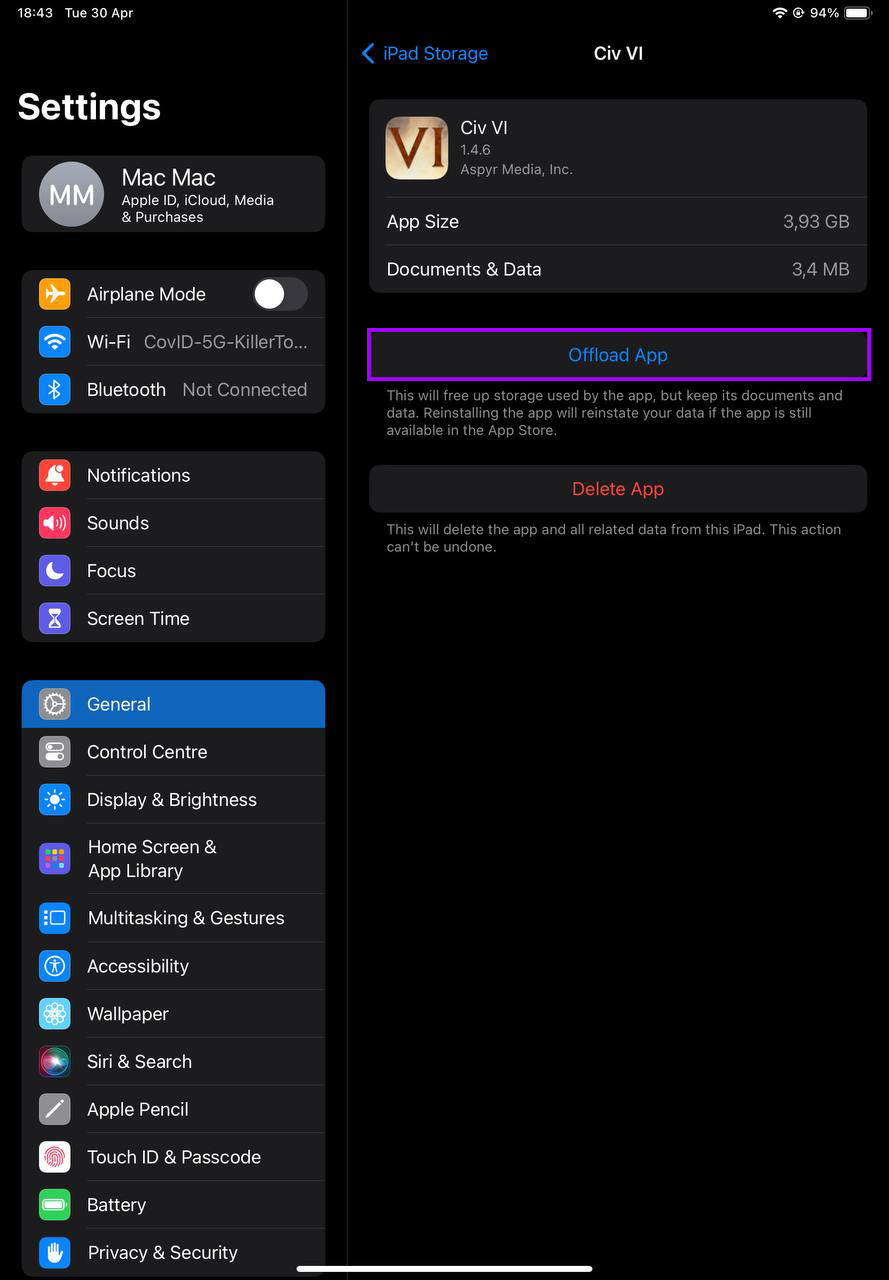
- Go through your Photos, Videos, and Music. Delete anything you no longer need. Consider using cloud services like iCloud to store these files instead of keeping them on your device.
Regularly managing your storage not only makes your iPad run faster but also ensures that you have enough space for important updates and new apps. For more tips on cleaning storage, check the dedicated guide here.
By taking the time to clean and organize your iPad’s storage, you’ll notice an improvement in overall device performance, making your experience smoother and more enjoyable.
Close Unused Apps
Closing apps that you’re not using can make an iPad faster by freeing up system resources like memory and processor time, which can be redirected to enhance the performance of apps you are actively using. Here’s how to properly close unused apps:
- Double-click the Home button if your iPad has one, or swipe up from the bottom of the screen and hold in the middle of the screen briefly if your iPad doesn’t have a Home button.
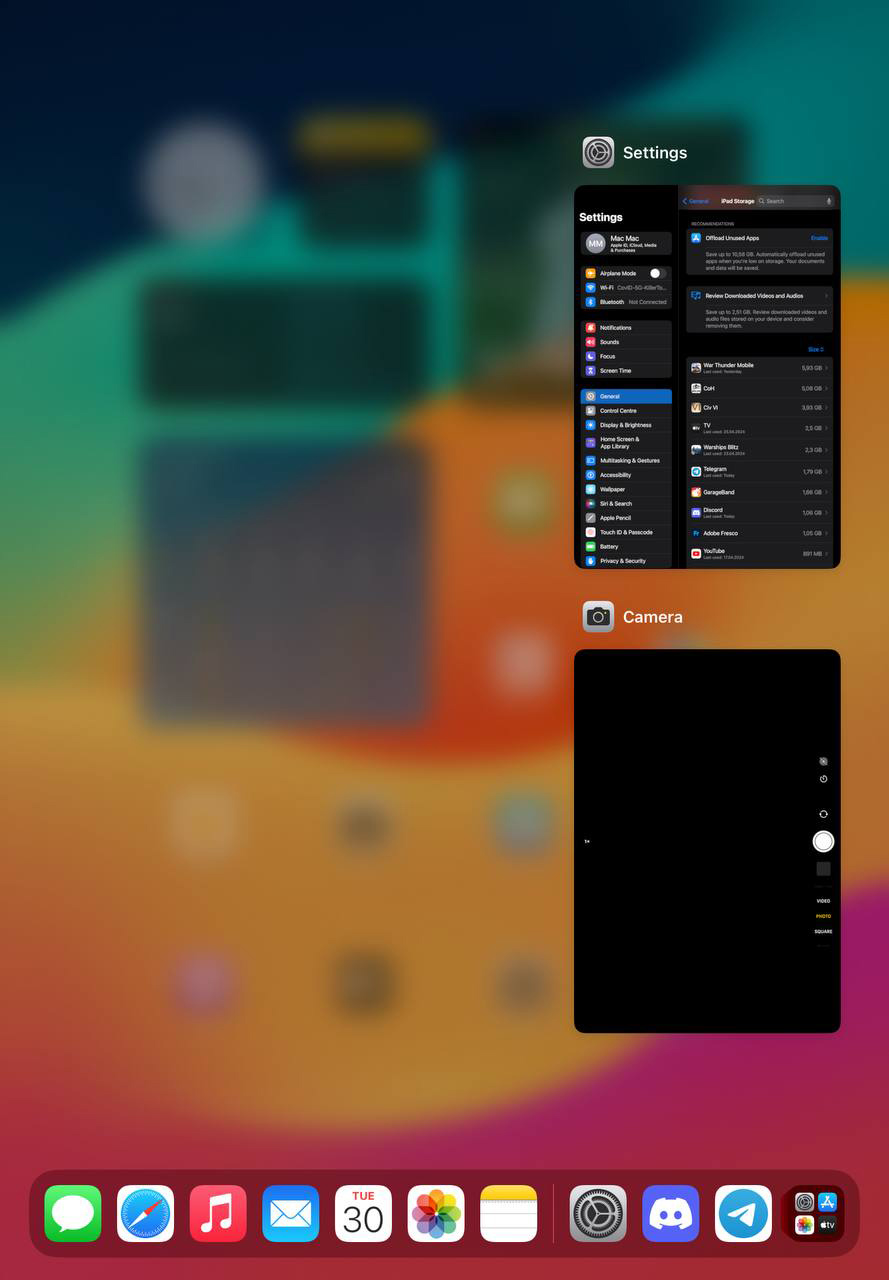
- When the App Switcher opens, you’ll see all the apps currently running in the background. Swipe up on each app preview to close them.
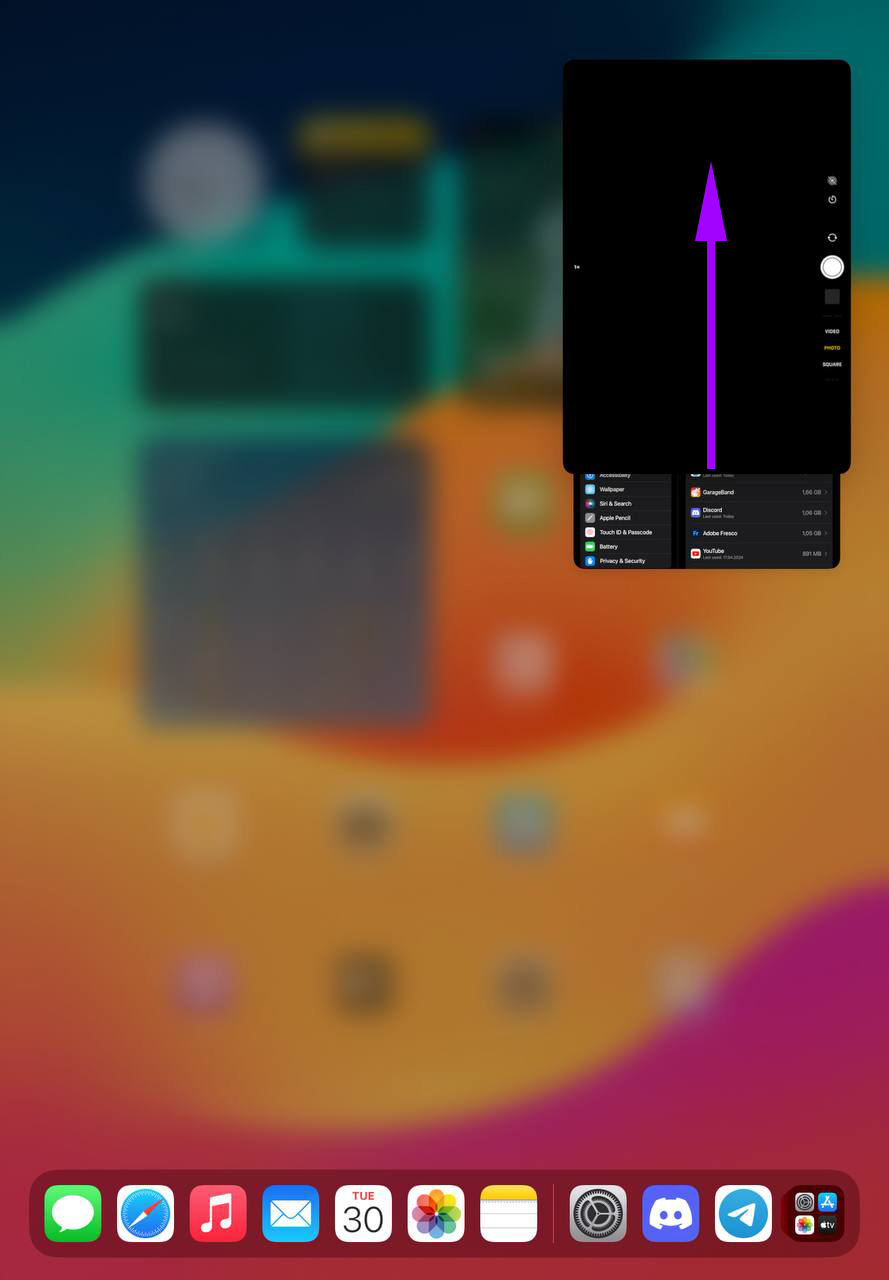
It’s a common misconception that you need to close apps all the time to save battery life or speed up old iPad models. In reality, iOS is quite efficient at managing apps in the background. However, if you notice an app is misbehaving or your iPad is particularly slow, closing unused apps can help resolve these issues.
Closing apps that are no longer needed can help maintain optimal performance levels, especially if you’re running intensive applications or games.
Disable Background App Refresh
Disabling Background App Refresh is an effective strategy to improve old iPad performance. This feature allows apps to update content in the background when connected to Wi-Fi or cellular data, which can drain battery life and consume system resources. Here’s how to turn it off:
- Open the Settings app on your iPad.
- Scroll down and select General to open more options, there tap on Background App Refresh. You will see a list of apps that use this feature.
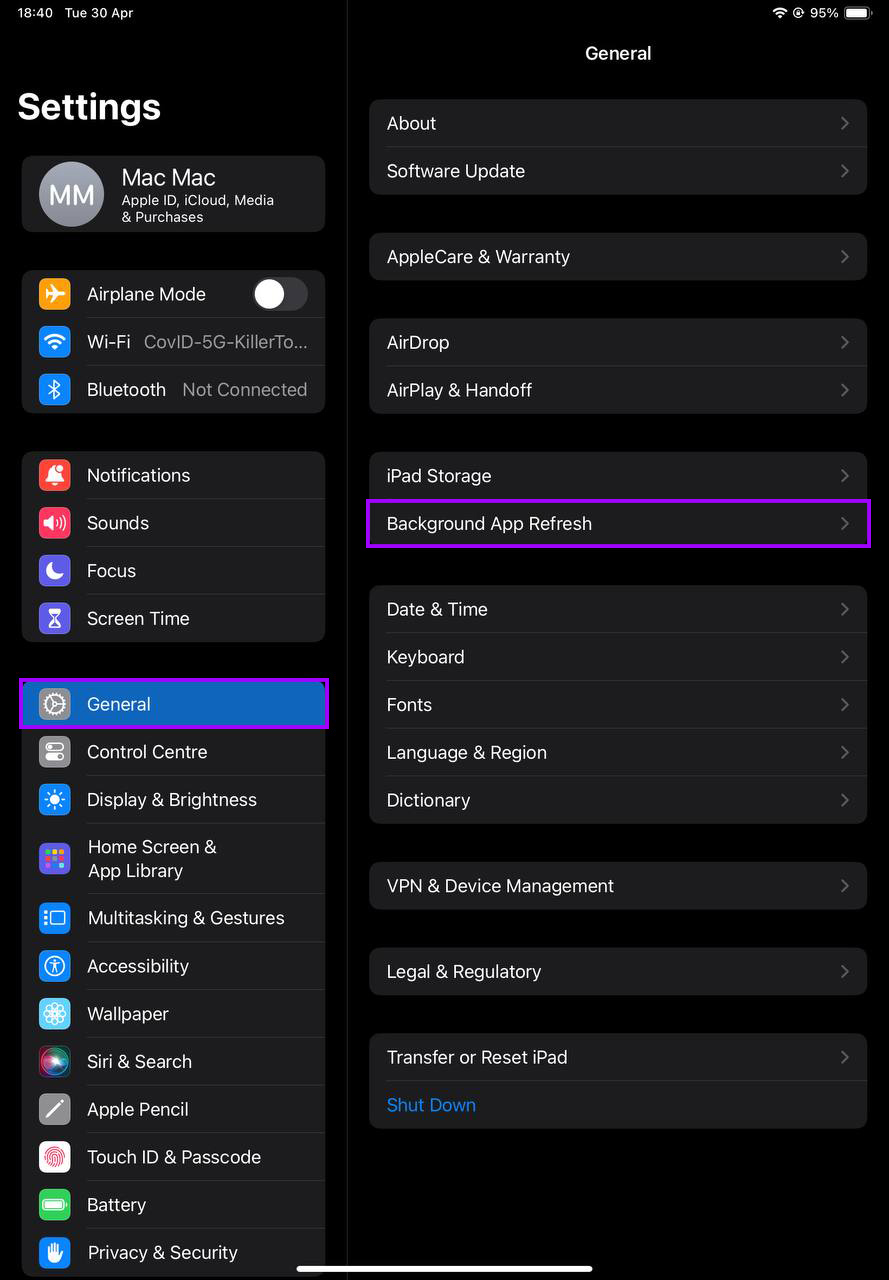
- You can disable Background App Refresh entirely at the top, or you can select individual apps that you don’t want refreshing in the background.
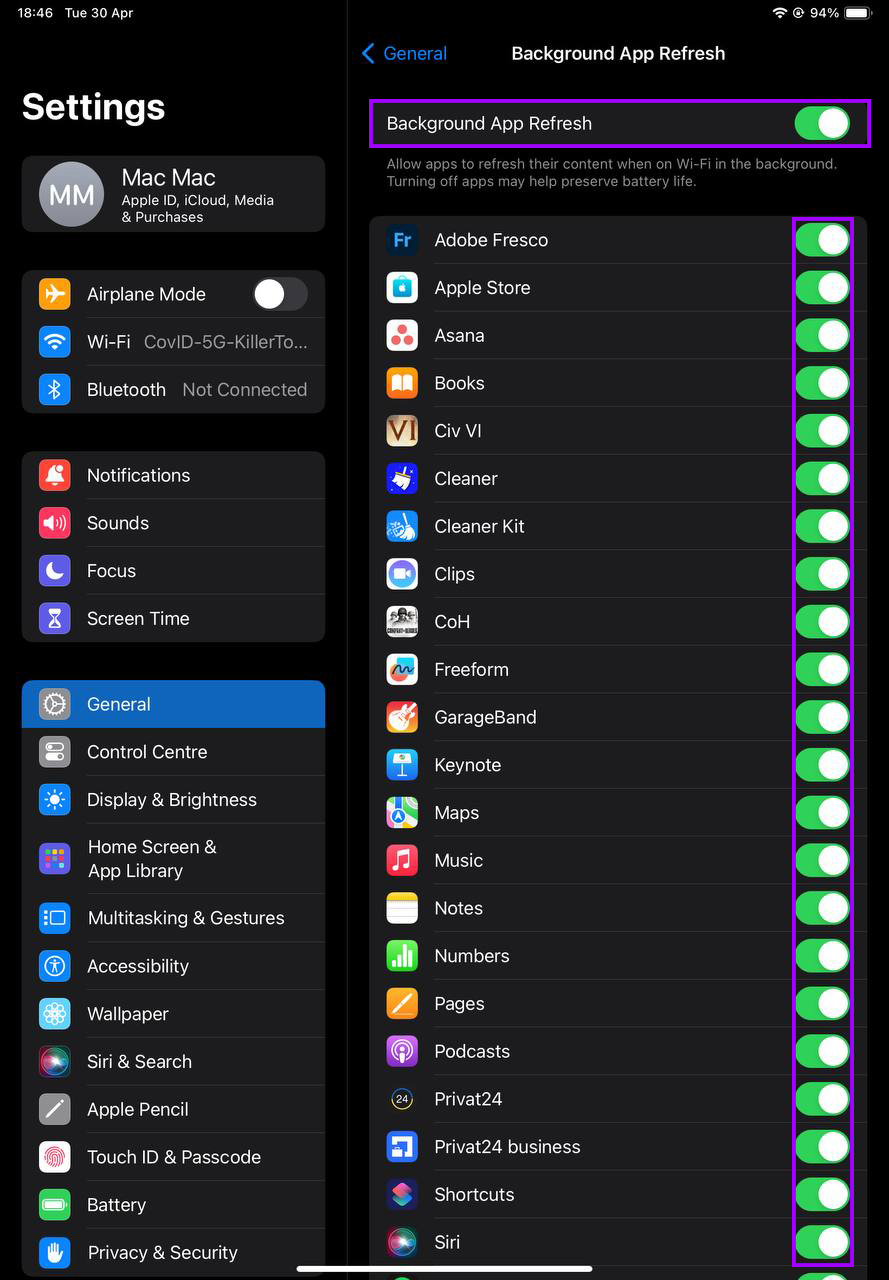
Turning off this feature can help your iPad run more smoothly by conserving its resources, especially if you’re using an older model. This action can lead to more predictable battery usage and generally make your iPad run faster because it won’t be working as hard to update apps in the background.
Managing this setting is particularly beneficial for those who use their iPad for essential tasks and need to ensure it runs efficiently without unnecessary interruptions.
Reduce Motion and Visual Effects
Reducing motion and visual effects can significantly speed up an iPad, especially older models that may struggle with the demands of complex animations and transitions in the user interface. Here’s how to adjust these settings:
- Start by tapping the Settings app on your iPad.
- Scroll down and choose Accessibility from the list of options. There tap on Motion.
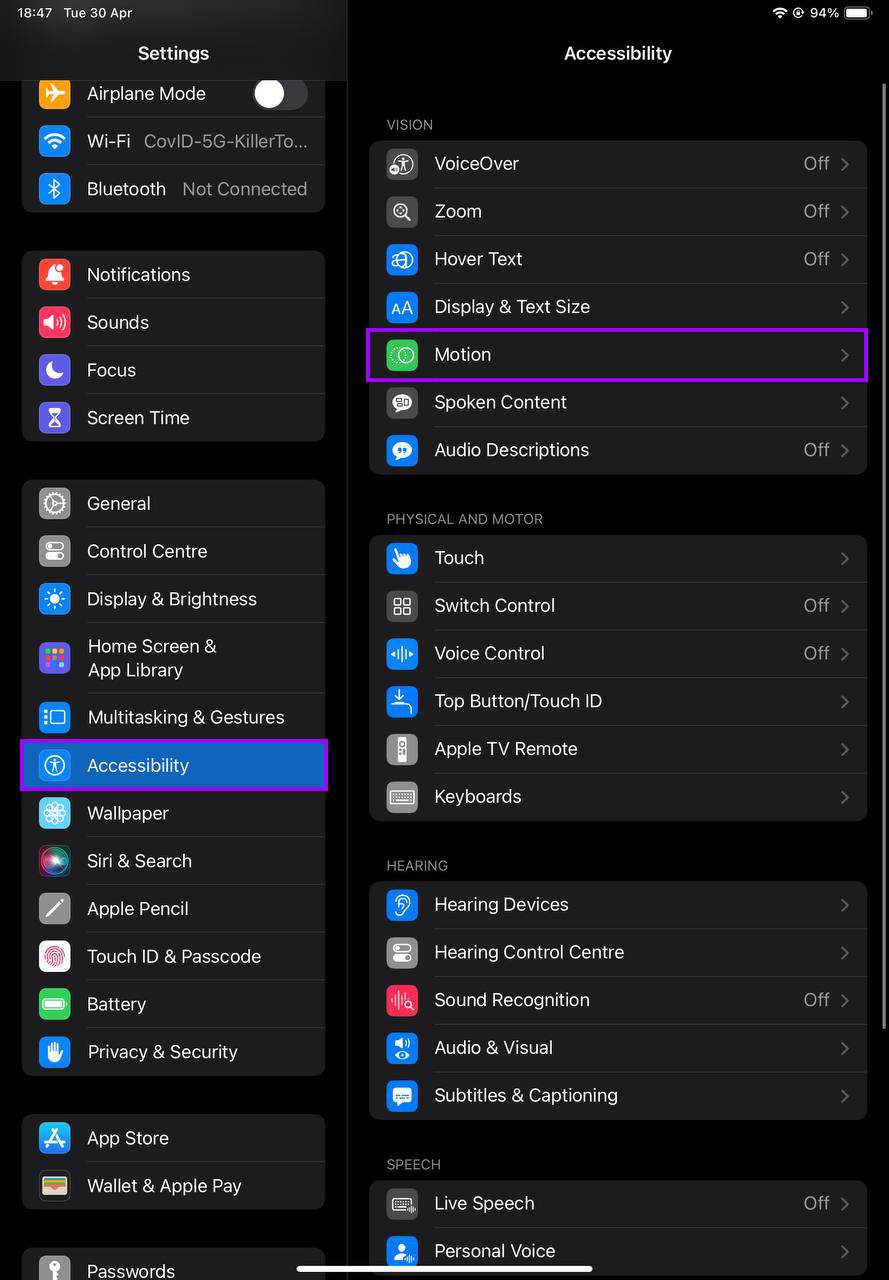
- Switch the Reduce Motion toggle to ON. This action simplifies motion and transitions, reducing the effect of animations such as parallax icons and screen zooming.
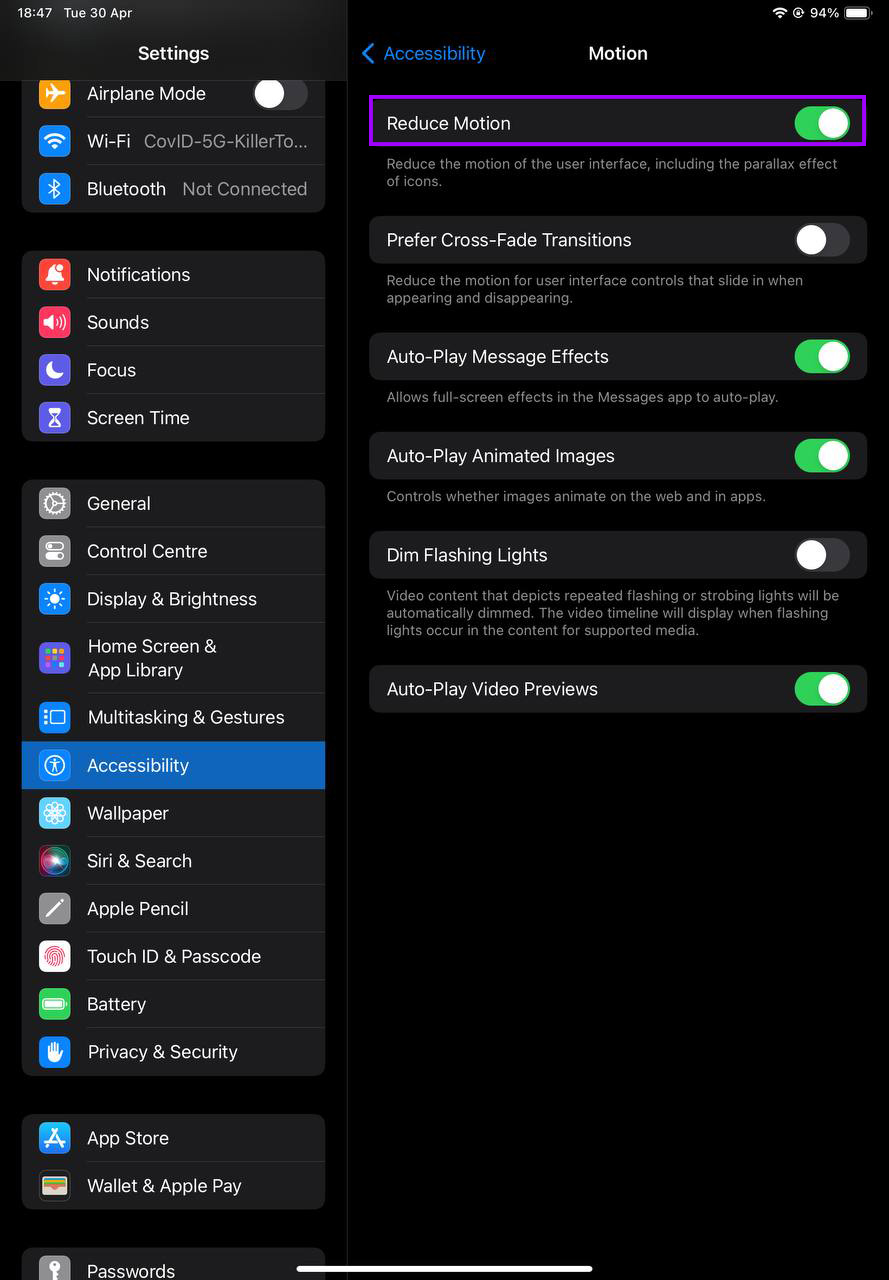
- Still within the Accessibility settings go to Display & Text Size and turn on Reduce Transparency. This setting reduces the transparency and blur effects on some backgrounds, which can help improve visibility and reduce the GPU load, thereby speeding up the device.
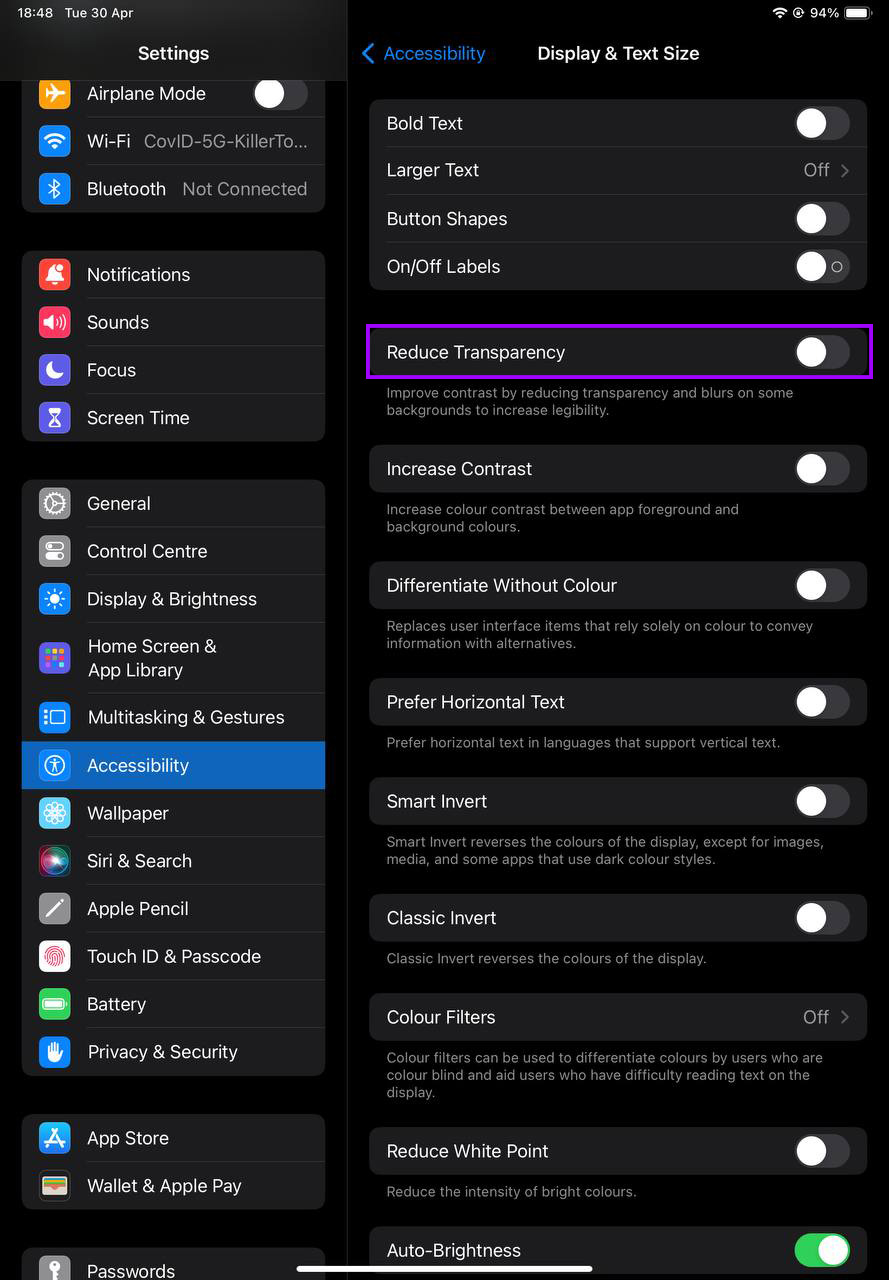
Activating these settings helps make an old iPad faster by cutting down on unnecessary graphic effects that can slow down your system. This is particularly useful if you find animations distracting or if your iPad is lagging in performance.
Making these adjustments can lead to a smoother and more responsive experience on your iPad, making it easier to use, especially for those who prefer a simpler visual interface.
Clear Safari Cookies and Cache
Clearing the Safari cookies and cache can help make an iPad run faster by removing stored data that can slow down your web browsing experience. Here’s how to clear these elements from Safari on your iPad:
- Tap the Settings app on your iPad’s home screen.
- Scroll down in the Settings menu and select Safari.
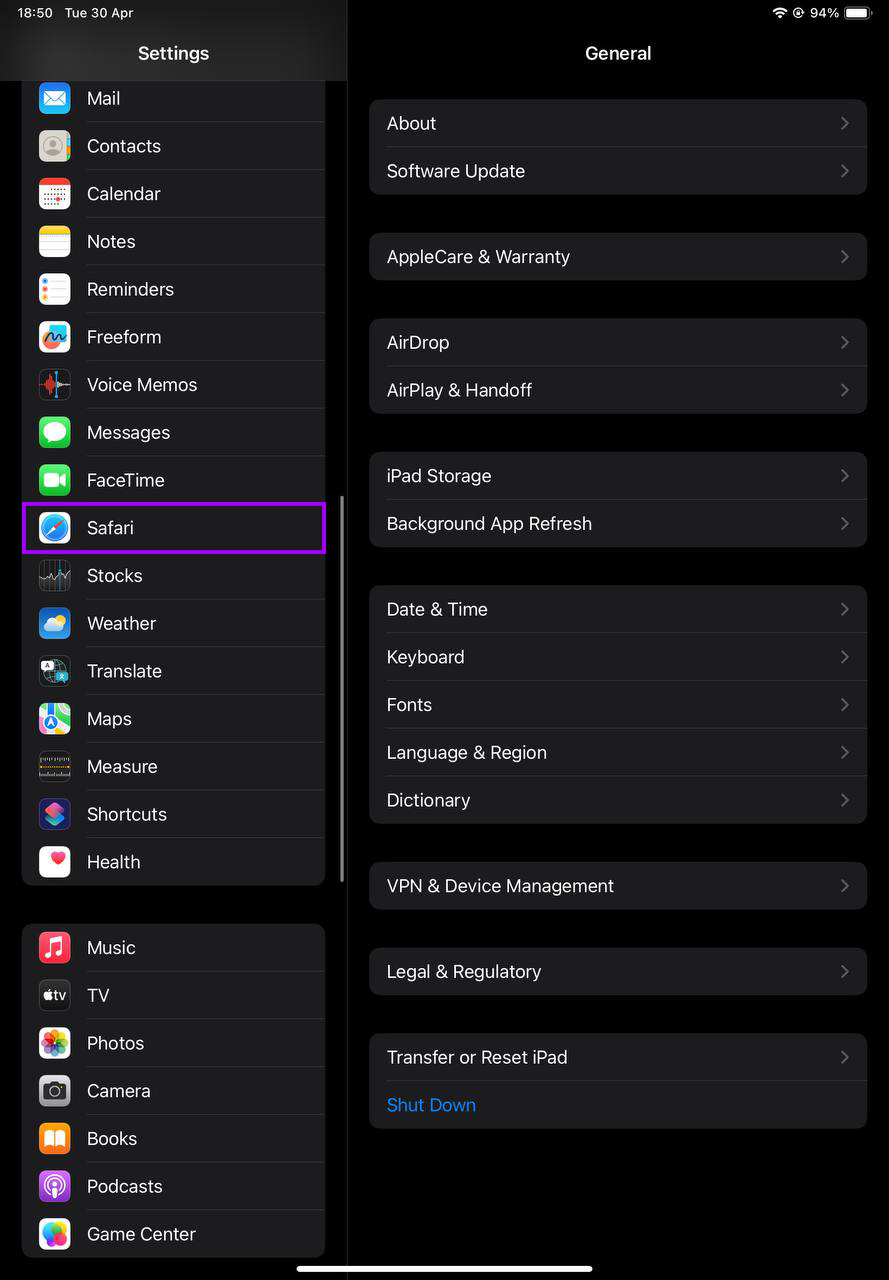
- Clear History and Website Data: Scroll to the bottom of the Safari settings and tap Clear History and Website Data. Confirm your choice when prompted.
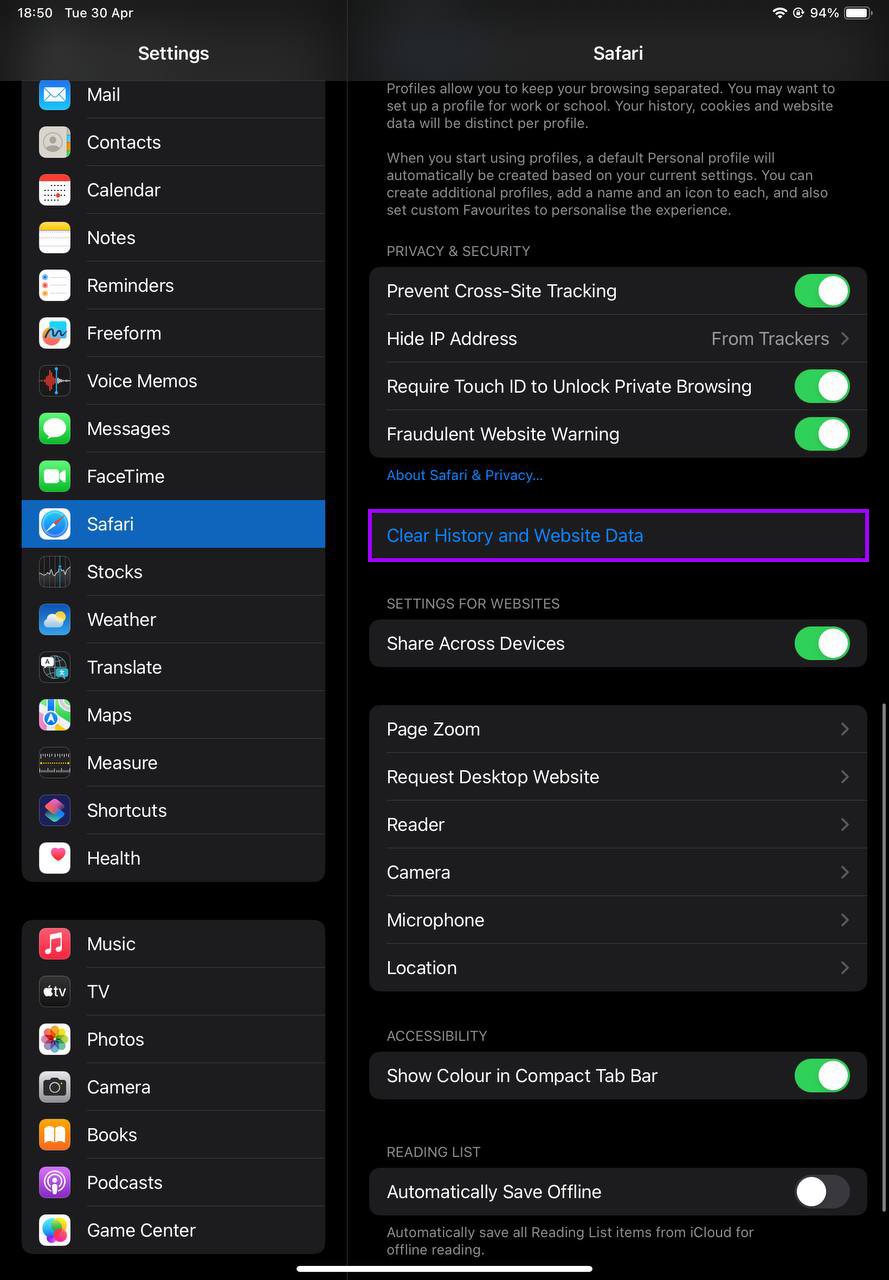
This action will remove history, cookies, and other browsing data. Note that this will also log you out of any websites you were signed into. Clearing this data can not only speed up old iPad devices but also provide a fresh start if you’re experiencing issues with websites not loading correctly.
Regularly clearing the Safari cache and cookies ensures that your browser operates more efficiently. By keeping your browser clean, you enhance security and improve the speed of your web interactions, contributing to a better overall performance of your iPad.
Reset Your iPad to Factory Settings
Resetting your iPad to factory settings is a more drastic measure but can be highly effective in rejuvenating an older device that continues to lag despite all other efforts. This process removes all your data and settings, restoring the device to its original state. Here’s how to clean up iPad to run faster by performing a factory reset:
- Tap the Settings app on your iPad.
- In the general tab General go to Transfer or Reset iPad
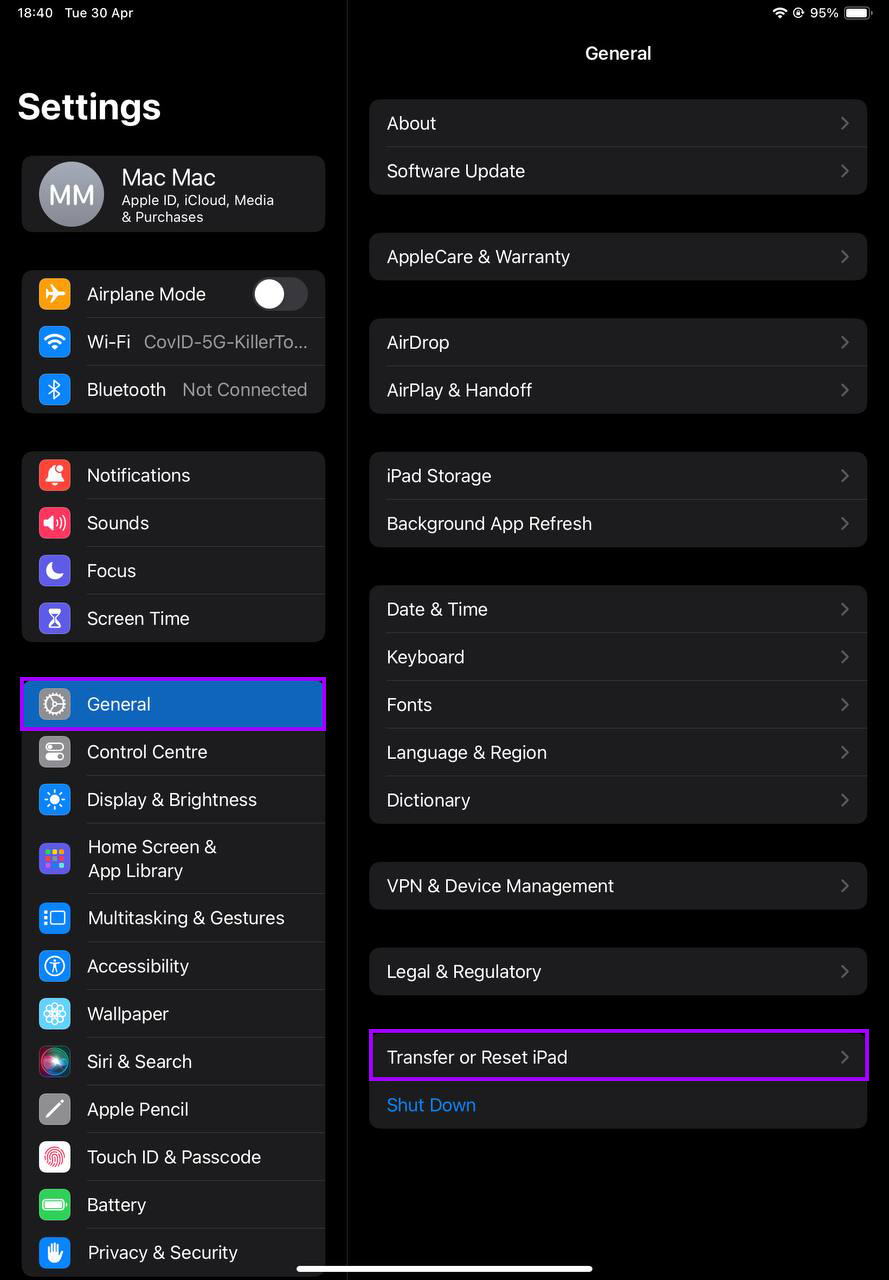
- Select Erase All Content and Settings. You will need to enter your passcode and confirm your decision. The iPad will then begin the process of wiping all data, which can take a few minutes.
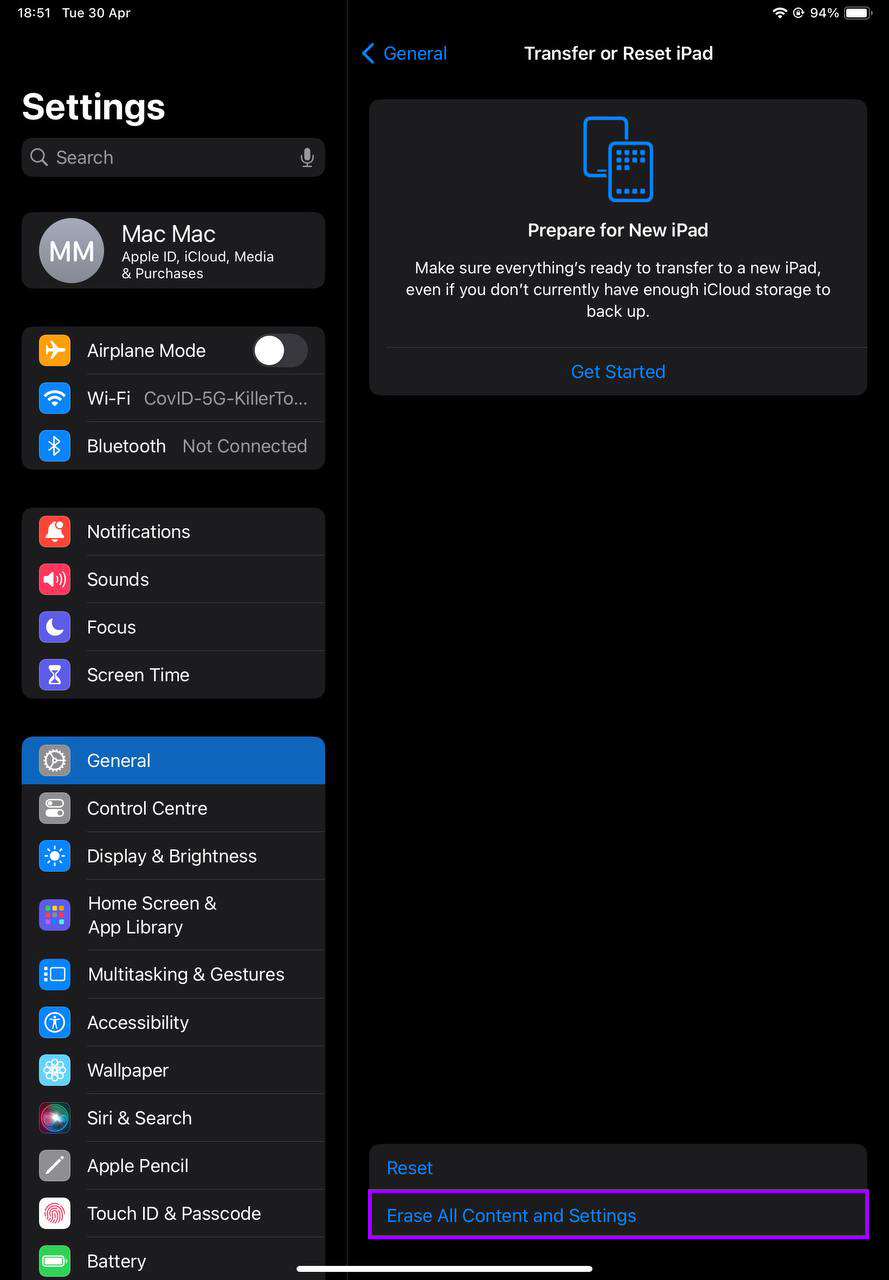
After the reset, your iPad will be as it was when you first bought it, which can make old iPad faster by removing clutter, outdated data, and settings that may have been slowing down the device.
Remember, this should be your last resort after trying all other methods to improve your iPad’s performance. A factory reset can significantly enhance the speed of your iPad, but it requires reinstallation and reconfiguration of apps and settings afterward.
By using this method carefully and responsibly, you can breathe new life into an aging iPad, ensuring it continues to serve your needs efficiently for longer.
Consider Upgrading Your iPad
If you’ve tried all the above methods and your iPad is still not performing to your expectations, it might be time to consider upgrading to a newer model. Newer iPads come with more advanced hardware that can handle the latest software and applications more effectively. Here’s how to decide if an upgrade is right for you:
- Assess Performance Needs: Evaluate whether your current iPad meets the demands of your daily tasks. If you frequently experience delays or cannot use certain software efficiently, it might be time for an upgrade.
- Compare Models: Look at the specifications of the latest iPads to see which model would best suit your needs. Consider processor speed, RAM, storage capacity, and additional features that could impact your user experience.
- Check Trade-In Values: Apple and other retailers often offer trade-in deals that can make upgrading more affordable. Check how much your current iPad is worth and consider this discount against the cost of a new model.
An upgrade can provide a better overall user experience with faster processing, improved graphics, and longer battery life. For help choosing a new iPad, you might find Apple’s comparison tool useful, which is available on their official website.
Moving to a new iPad can be a worthwhile investment, especially if your current device no longer supports the latest updates or fails to perform important tasks. By upgrading, you can enjoy the best technology available, keeping up with software developments and new features that improve productivity and entertainment.
Conclusion
Improving the performance of an older iPad is not a daunting task. By following the simple steps outlined in this guide – such as restarting your device regularly, updating iPadOS, and managing storage – you may significantly improve your iPad’s responsiveness. Remember, keeping your iPad up to date and minimizing clutter is key to maintaining its speed and functionality. If all else fails, consider whether it’s time to upgrade to a newer model, which can offer the latest advancements in speed and technology.



 If an update is available, tap on Update Now. Follow the on-screen instructions to complete the update.
If an update is available, tap on Update Now. Follow the on-screen instructions to complete the update.













